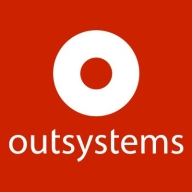

OutSystems and Microsoft Power Apps compete in the low-code app development category. OutSystems stands out for advanced project management and integration features, while Power Apps has strong integration with the Microsoft ecosystem, which may give it an edge for users familiar with Microsoft's suite.
Features: OutSystems delivers advanced project management capabilities with its one-click publish feature, agile development support, and integration with various data sources, facilitating rapid app creation. Microsoft Power Apps is known for visual drag-and-drop functionality, strong Microsoft ecosystem integration, and extensibility with services like SharePoint and Power BI, making the platform easy for Microsoft users.
Room for Improvement: OutSystems could improve Service Studio performance, offer native reporting capabilities, and refine its licensing models and resource availability. Microsoft Power Apps faces data delegation constraints, expensive premium connectors, and scalability issues for larger enterprises, with room for improved third-party app integration and customization options.
Ease of Deployment and Customer Service: OutSystems supports various cloud environments with responsive technical support that varies by contract level. Microsoft Power Apps seamlessly integrates within Microsoft’s broader ecosystem, benefiting from well-established customer support as part of Microsoft services. OutSystems provides proactive support, whereas Power Apps offers ease through a familiar support framework.
Pricing and ROI: OutSystems is often expensive for smaller enterprises due to its annual and usage-based costs but provides strong ROI through faster development cycles. Microsoft Power Apps offers more adaptable pricing, particularly appealing to Microsoft Office 365 users. However, costs increase with premium connectors and larger user bases. Both platforms offer significant ROI, with Power Apps presenting a flexible entry point for Microsoft-concentrated businesses.
The connection between Power Apps and Power BI simplifies generating and presenting reports, alleviating the workload and enhancing productivity.
The aim is to create a cleaner interface to replace spreadsheets, thus standardizing processes and improving efficiency.
Developing that same project in OutSystems can be completed in around 40 to 50% less time, requiring only six resources.
Their assistance was crucial as we developed the solutions.
Community support is closer to an eight or nine since there's a big enough community that someone has likely faced the same problem and posted about it, improving the community overall.
Microsoft's technical support is around a seven to eight.
Many helpful videos and documentation are available on the OutSystems site, making it relatively easy to learn the platform.
If it is flexible and includes premium connectors, scalability is easy.
It is quite scalable, though there are some limitations regarding the number of records.
They can be deployed vertically and horizontally, supporting as many deployments as needed.
I would rate the stability of Microsoft Power Apps as a nine out of ten.
This would assist business process users who lack coding knowledge.
These tools should be intuitive for business users who will need at least a week of training to use them effectively.
In many use cases, applications might require importing data exceeding two thousand records, potentially reaching one hundred thousand.
It is crucial to be aware of which module corresponds to which application in real-time projects, as there are multiple applications.
I would like to see more integration between the use of artificial intelligence to speed up the process delivery time.
What I would like to see is more servicing business analysts in the next release of OutSystems.
For small to medium enterprises, it is affordable, especially with Microsoft Enterprise licensing.
For more elaborate work, an upgrade to an enterprise license, costing around $35 per license, is needed.
It is in the middle range and considered reasonable given the current price.
Subsequent users can be added at an additional cost per user; exact pricing details can be found on the OutSystems site.
It integrates seamlessly with Power Automate for process automation and connects with email, SharePoint, Power BI, and MS Teams, facilitating everyday processes.
Canvas Apps provide complete user design flexibility with many connectors to integrate into Microsoft Power Apps, making it efficient to fetch and update information from various data sources such as Dataverse, Excel, SharePoint, and Azure.
I run a couple of SQL Servers, which are premium connectors in Microsoft Power Apps, and that requires a different licensing model than what a standard E5 license covers.
OutSystems offers a lot of reusable components and solutions that I can simply drag and drop and use, which has a significant impact on project delivery time.
OutSystems has a very good learning curve for developers.
I have recommended it in situations where very rigid enterprise structures are blocking them from being agile.
| Product | Market Share (%) |
|---|---|
| Microsoft Power Apps | 13.8% |
| OutSystems | 8.3% |
| Other | 77.9% |


| Company Size | Count |
|---|---|
| Small Business | 30 |
| Midsize Enterprise | 17 |
| Large Enterprise | 50 |
| Company Size | Count |
|---|---|
| Small Business | 18 |
| Midsize Enterprise | 7 |
| Large Enterprise | 29 |
Microsoft Power Apps is a rapid application development software and low-code development platform. The solution consists of a suite of apps, services, connectors, and a data platform. It provides an environment for building custom apps which is suitable for different businesses.
Microsoft Power Apps allows users to not only build applications, but also connect them to Microsoft's other sources, including the underlying data platform Microsoft Dataverse, as well as online and on-premise sources such as SharePoint, Dynamics 365, and Microsoft 365. The applications built using Microsoft Power Apps have a responsive design that makes them suitable for work in browsers and on mobile applications on different devices.
The no-code side of the product makes it suitable for complete beginners to app building, allowing them to easily create fully functional applications with many features. The solution also has a specialized platform for developers where specialists can access data and metadata, create custom connectors, integrate with external data, and apply business logic. The solution allows users to create three types of apps: canvas, model-driven, and portal. They are made using:
Microsoft Power Apps Features
The three different design tools of the solution, Power Apps Studio, App Designer, and Power Apps Portals Studio, come with various features which allow users to utilize the tools. Some of these features include:
Microsoft Power Apps Benefits
The product brings various benefits to organizations and individuals who utilize it. Some of the biggest advantages of Microsoft Power Apps include:
Reviews from Real Users
An IT Specialist (INFOSEC) at a government appreciates this tool because it is low-code, low learning curve, and reduces manpower.
Rafael T., a data engineer at NTT Security, likes Microsoft Power Apps, because it is great for making apps quickly, has helpful support, and integrates with Power BI.
OutSystems is a platform for low-code application development that unites design, code, and deployment to simplify development so any business can create innovative solutions in a timely manner. There are various use cases an organization can employ with OutSystems, including:
OutSystems offers faster development and deployment times than hand-coding while delivering unique and personalized solutions to its customers. The main focus of OutSystems is high-performance low code which enables businesses to create functional products that answer their needs. It offers clients the ability to develop enterprise-grade applications with a high level of security.
The product stands out from its competitors as it offers:
It ensures its clients that the applications built using this platform are as scalable as hand-coded ones while increasing workspace productivity and evolving applications’ capabilities.
OutSystems Features
OutSystems has various features through which users can develop and deploy highly efficient applications and other products. Some of the features include:
OutSystems Benefits
The solution offers a wide array of benefits to companies that utilize it in their application development. Some of these benefits include:
Reviews from Real Users
Harikrishnan R., a technical lead at Netlink Software Group America Inc, likes OutSystems because the tool helps with validation, offers good features, and is reliable.
An owner at a consultancy thinks OutSystems is versatile with great scalability and great technical support.
We monitor all Low-Code Development Platforms reviews to prevent fraudulent reviews and keep review quality high. We do not post reviews by company employees or direct competitors. We validate each review for authenticity via cross-reference with LinkedIn, and personal follow-up with the reviewer when necessary.